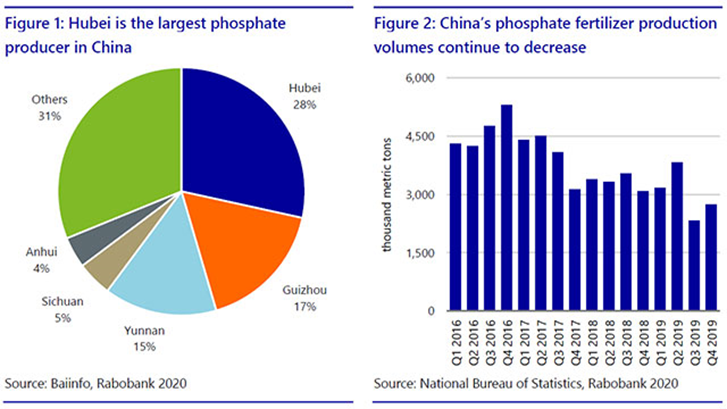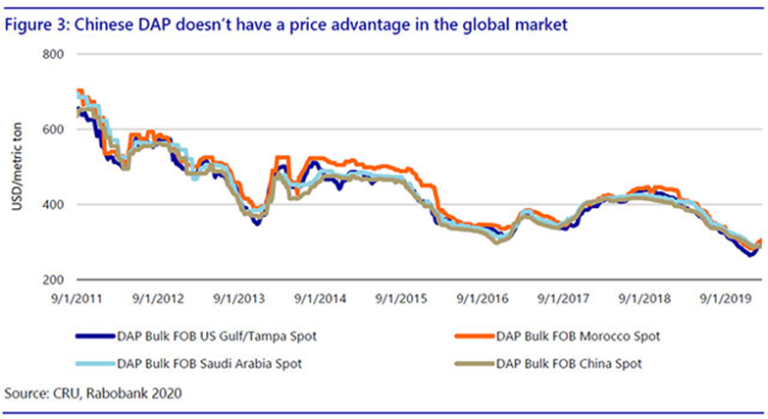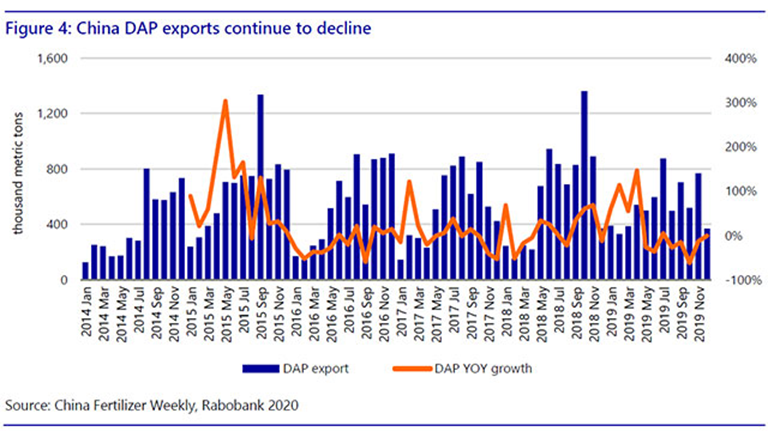.jpg)
Phosphate production in China was badly affected
The Chinese feces market is stalling due to the rapid and strong spread of corona virus. Lack of labor and transportation disruptions have become a top concern for manufacturers. Many manufacturers have had to cut or suspend production, especially small and medium enterprises (SMEs). In order to ensure the production process for spring crop agricultural production, the Chinese government issued an urgent notice to ensure the smooth transport and circulation of agricultural products. The situation has improved as the number of new infections has dropped for 16 consecutive days, except in Hubei province. With the exception of Hubei Province, the Chinese fertilizer market has begun to recover.
 |
But for Hubei, the province hardest hit by the pandemic, resumption of production could be delayed longer. Currently many road transport routes are still limited. And the Chinese government also announced it would tighten traffic control, maintain the blockade of Hubei. Hubei has always been the largest phosphate fertilizer production area in China, accounting for about 30% of the country's total production capacity. This pandemic makes it difficult for phosphate fertilizer manufacturing enterprises to resume production and operation capacity decreases by 30-40% compared to the same period in 2019, resulting in a decrease in phosphate fertilizer production. On the other hand, tightening transport regulations isolating most areas of Hubei Province, making it difficult to transport and deliver goods. Phosphate prices may increase due to increased production costs and reduced supplies.
More unpredictable uncertainties on the demand side
If the disease is well controlled and the travel restriction orders are lifted in March (the time of peak use of phosphorus for many crops), demand will increase to boost production of short-term crops. and pushed up the price of phosphate. This may be good news for manufacturers who have gone through tough 2019. But it is important to pay attention to the impact of the disease on the consumer market that can be persistent, can push agricultural prices down and impact farmers' incentives to invest in fertilizer due to lack of capital. .
While the domestic market is unpredictable, China's phosphate export market is also not satisfactory. In 2019, the export of DAP fertilizer decreased by 24.9% to 6.47 million tons, mainly due to the operation of new plants in the Middle East, leading to a reduction in global phosphate prices and reduced competitiveness. paintings of Chinese products on the international markets. In addition, India and Pakistan, major importers of Chinese phosphate, continue to reduce imports due to high inventories. Given the current situation, China's high DAP price will be difficult to compete in international markets.
 |
 |
Risks and opportunities go hand in hand
Food security is a prerequisite, considering the current global population growth pressures and economic growth in developing countries, and these factors will encourage the steady pace of growth. Phosphate market. In the long term, South Asia, Central Asia, Central and South America, and Africa will be the main growth markets. The supply deficit may occur in the phosphate market by 2020 due to production declines in China and the US, possibly the start of a new cycle. The corona virus outbreak will serve as a trigger for supply reforms, accelerate the departure of SMEs in China, and create room for development of large enterprises. This is the time to set out a path to improve the domestic phosphate industry substantially and achieve long-term development steps. Rabobank thinks the following three aspects are opportunities for Chinese manufacturers:
-
Product portfolio optimization – Most of the Chinese phosphate producers are still focusing on producing DAP and MAP with little added value. This is the time to develop specific fertilizers, provide comprehensive nutrition for crops, improve fertilizer absorption and solve soil quality issues.
-
Improve the usefulness of phosphorus – Apply basic fertilizer production to adapt to modern agricultural development. Achieving positive transformation results through modern phosphate production technology, expanding the industry production chain and diversifying products.
-
Reforming the business model – China's agricultural production model is transforming in many ways, in terms of scale, standardization and level of intensification. Large producers will depend more on technology, knowledge and resources and financial services. Era in which the market is dominated by past products and will be replaced by future dynamics such as “products + services” in the future.
According to Rabobank
